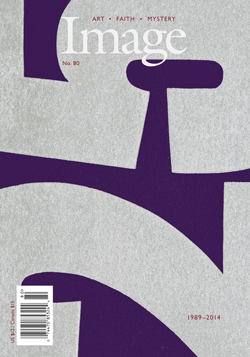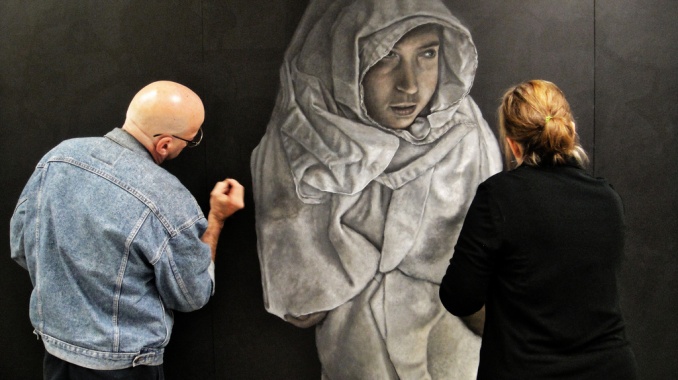
Thanks to the generosity of Image: A Journal of the Arts and Religion, I got to spend a half day at Glen East, a workshop Image sponsors every year. The experience was rich with conversations and presentations about intertwining the life of faith and the life of art.
The virtues, disciplines, and choices of faithful art-making are often similar to the things that sustain faithful scholarship. Here are three patterns Christian scholars can study from Glen East:
1. Practicing Hospitality
Glen East was a deeply hospitable place. I could tell in the way the staff invited any new attendee to come for a half day free of cost, in the way they encouraged those of us who came to stay and enjoy dinner together, and in the way the participants welcomed me and conversed with me (credit here is also due to the local church, since my church put me in touch with a fellow parishioner who made me feel profoundly welcome).
Being a scholar and a teacher is rich with opportunities for hospitality: inviting people into a new classroom, a new subject, a new set of experiences. What are some great examples of hospitable teaching and research that you’ve seen?
2. Inviting a community into your work
One of the participants gave me a tour of the visual arts workshop she was in, which used a collaborative style but also allowed for some self-direction. Each artist came with an idea for his or her piece, and the mediums varied widely: paper collage, landscapes from photographs, and abstract paintings were all represented. All the artists worked on all the pieces, though the originator of the piece had the final say about whether a particular element remained or not.
I heard the workshop leader, Tim Lowly (http://glenworkshop.com/east/speaker-lineup/tim-lowly/), speak about his own painting that evening. Unsurprisingly, he encouraged the attendees to think about what happens when you let other people into your artistic process. Lowly frequently invites other to participate in his work. One example was his painting Without Moving (after Guy Chase).

Every time it is exhibited, Lowly invites people to come and paint dots on the image, so that there is a visual record of the presence of a community that becomes richer each time the painting is shown. Lowly says that everyone paints dots a bit differently, so that the painting is a record of individuality as well as community.
What are some ways academics can invite a community into their work? I think of collaborative research and of interactive teaching modes in the classroom, but what are others?
3. Honoring those who aren’t always visible in the day to day of our vocation
Lowly’s session was also compelling because he described the experience of painting his daughter Temma over more than twenty years. Temma has a seizure disorder and cortical blindness. Lowly sees painting her as a chance to honor her, and to make her humanity present to the viewer.
Paintings of Temma challenge the viewer to see the world differently, and to understand themselves differently. For instance, Temma has a sense of wonder when she encounters everyday experiences like feeling water. Lowly often paints her in ways that suggest an encounter with the divine, for instance in ways that pick up the biblical imagery of the pillar of fire in the wilderness.
It’s clear when you hear Lowly talk about this experience that being Temma’s father has been an encounter with the divine for him. He sees the world more fully and more richly because of her, and his painting seeks to impart that experience to the viewer.
Lowly’s thoughtful conversation with the participants made me wonder how academics can more fully recognize and engage with experiences different from our own, how we can invite those other experiences into our vocations and grow more open to being changed by them.
Dr. Hannah Eagleson loves building the ecosystem Christian scholars need to flourish and create positive impacts, in the university and beyond. She is Associate Director of InterVarsity’s Emerging Scholars Network, a digital first ministry serving thousands of early career Christian scholars. Dr. Eagleson launched the ESN student/early career track at the American Scientific Affiliation annual faith and science conference. She is the editor of *Science and Faith: Student Questions Explored* (Hendrickson, 2019), and the one-semester guidebook *Scholar’s Compass: Connecting Faith & Work for Academics* (InterVarsity Emerging Scholars Network, 2021), with design by noted liturgical artist Ned Bustard. She also launched the Scholar’s Compass online devotional series in her previous role as ESN Editor. Dr. Eagleson holds an MA from St. John’s College (Annapolis, MD) and a PhD in Renaissance literature from the University of Delaware.

Leave a Reply